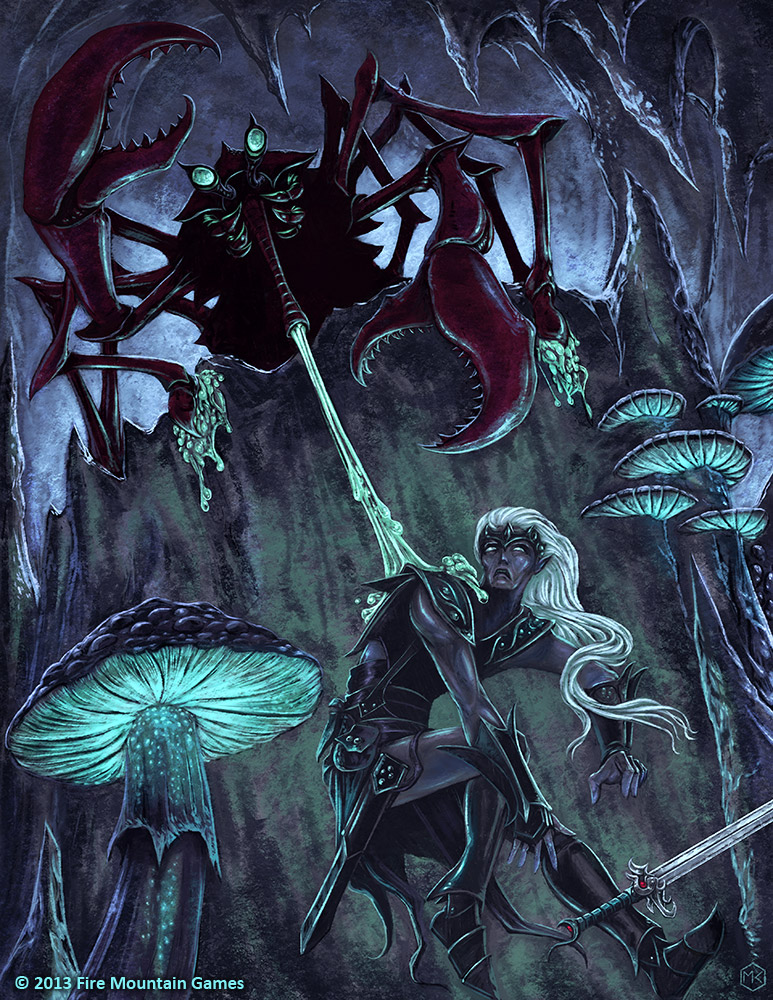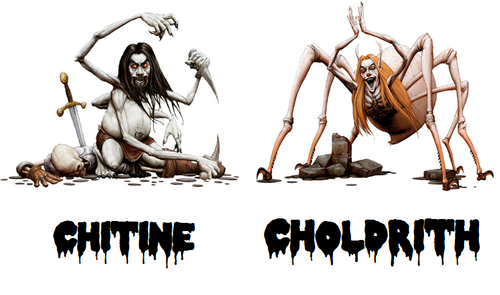Charles Rampant
Adventurer
The Cave Fisher has a surprisingly large description given to it, when it seems no more interesting than stalwarts like the Winter Wolf. It is kind of hard to get excited by yet another Spider in a game rather overflowing with them, but let's crack on regardless.

This image is rather gloriously over the top I feel, but does accurately show that the Cave Fisher, at Medium, is actually a surprisingly big lad, which it is hard to appreciate from the Volo's art. The image in Volo's is nice enough, but it is a bit... underwhelming? I mean, it all seems good technically, but the creature is just kind of standing there, trying to look unsettling, and I just don't find it very exciting. Sorry, artist person!
The background section for the Cave Fisher feels quite old fashioned. It reminds me of the bits that I've read from Planescape Monstrous Compendiums, where more attention was paid to a creature's habitat and ecology than to how the players might meet and interact with it. Here we learn about how they get used for pets (rather unsurprisingly), how they make good sources of liquor, food and rope, and how they like to hunt bats. They're ambush predators, and as always that means they can be met just as you fancy on the road, and can feature in plots like, "Find the lost blacksmith's boy!" and whatnot, but in general will just sort of exist in your game world.
In combat, these guys do reasonable damage with have two attacks a round, and they're as hard to kill than some monsters we've seen with almost double their CR. However, the real star of the show here is the Adhesive Filament, which is actually a surprisingly strong control mechanism (clunky wording, I can't think of the right term at the moment). Like most sticky web or whatever abilities, you're looking to do a weapon attack or a strength check to get out; however, this time around you'll have disadvantage, and your weapon might, amusingly, get stuck. Combined with the ability to reel in someone stuck in a web (60' range) and then smack them for a bonus, this is pretty potent stuff. By themselves, I don't know if I'd be that excited by them, even so; but combining that kind of control effect with Hobgoblin wizards or other humanoid foes, and I think you've got a solid combat option to check the hubris of your party.
Final verdict: stick these fellas onto your Underdark Random Encounters table, and contemplate adding them to Drow hunting parties.

This image is rather gloriously over the top I feel, but does accurately show that the Cave Fisher, at Medium, is actually a surprisingly big lad, which it is hard to appreciate from the Volo's art. The image in Volo's is nice enough, but it is a bit... underwhelming? I mean, it all seems good technically, but the creature is just kind of standing there, trying to look unsettling, and I just don't find it very exciting. Sorry, artist person!
The background section for the Cave Fisher feels quite old fashioned. It reminds me of the bits that I've read from Planescape Monstrous Compendiums, where more attention was paid to a creature's habitat and ecology than to how the players might meet and interact with it. Here we learn about how they get used for pets (rather unsurprisingly), how they make good sources of liquor, food and rope, and how they like to hunt bats. They're ambush predators, and as always that means they can be met just as you fancy on the road, and can feature in plots like, "Find the lost blacksmith's boy!" and whatnot, but in general will just sort of exist in your game world.
In combat, these guys do reasonable damage with have two attacks a round, and they're as hard to kill than some monsters we've seen with almost double their CR. However, the real star of the show here is the Adhesive Filament, which is actually a surprisingly strong control mechanism (clunky wording, I can't think of the right term at the moment). Like most sticky web or whatever abilities, you're looking to do a weapon attack or a strength check to get out; however, this time around you'll have disadvantage, and your weapon might, amusingly, get stuck. Combined with the ability to reel in someone stuck in a web (60' range) and then smack them for a bonus, this is pretty potent stuff. By themselves, I don't know if I'd be that excited by them, even so; but combining that kind of control effect with Hobgoblin wizards or other humanoid foes, and I think you've got a solid combat option to check the hubris of your party.
Final verdict: stick these fellas onto your Underdark Random Encounters table, and contemplate adding them to Drow hunting parties.
Last edited:



